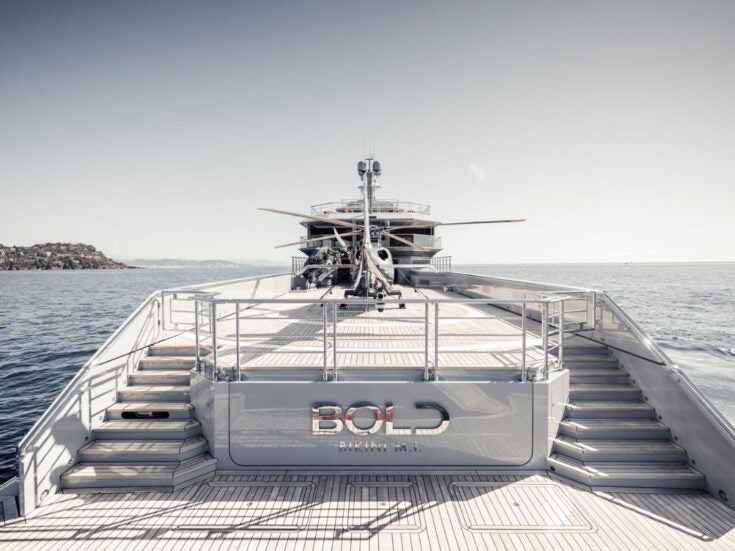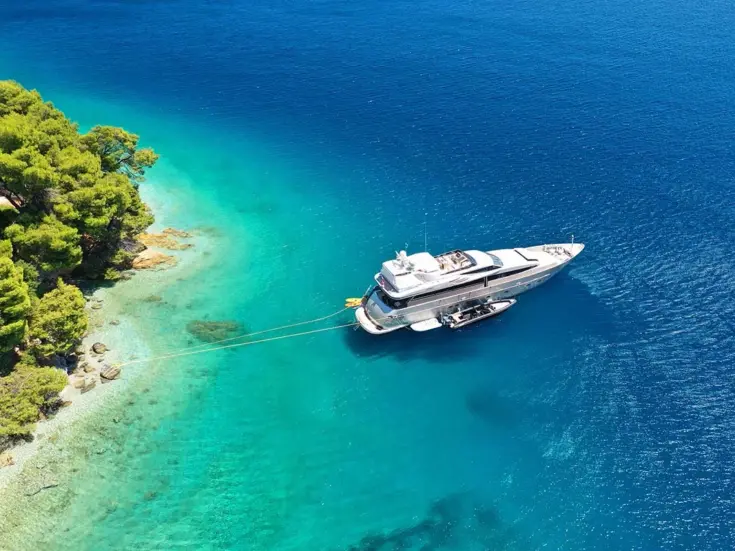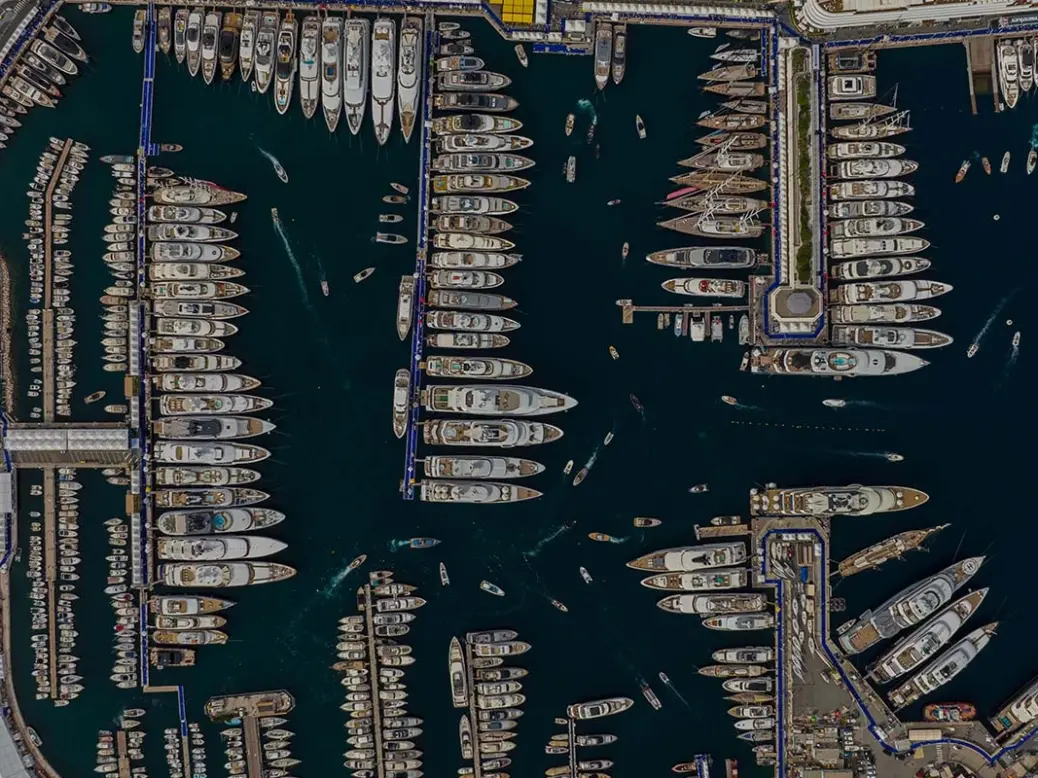
When billionaire John Caudwell criticised Rishi Sunak for weakening his net zero policies last autumn, some of the prime minister’s defenders chose a telling way to lash back at Caudwell. ‘Which one spouts more hot air?’ asked the Guido Fawkes political blog. ‘The 73-metre yacht, or the man who owns it?’
‘I get this all the time,’ Caudwell tells Spear’s with a note of exasperation in his voice. Yes, his superyacht Titania ‘is absolutely dreadful for the environment… as are aircraft and people’s package tours going on holiday and travelling all around the world’. But weaponising a yacht to try to undermine its owner’s calls for climate action is a distraction, Caudwell insists, from the huge overhaul of energy systems and agriculture that he believes is needed to deliver real progress on carbon emissions.
[See also: Buy, build or borrow: how to dive into the world of superyachts]
‘The really important point is that if you got rid of all the aircraft and all the yachts and even all the shipping… it would make hardly a scrap of difference to the environment in the long term, because what’s needed is way more radical than that.’
Indeed, the International Maritime Organization calculates that all forms of shipping produce about 3 per cent of global greenhouse gas emissions, with yachting responsible for 1/500th of those shipping emissions, or 0.006 per cent of the total.
The priority, Caudwell says, should be a broad switch to renewable energies, which would, hopefully, cut carbon emissions enough to buy the time needed to develop greener jet and maritime fuels.
Superyachts under scrutiny
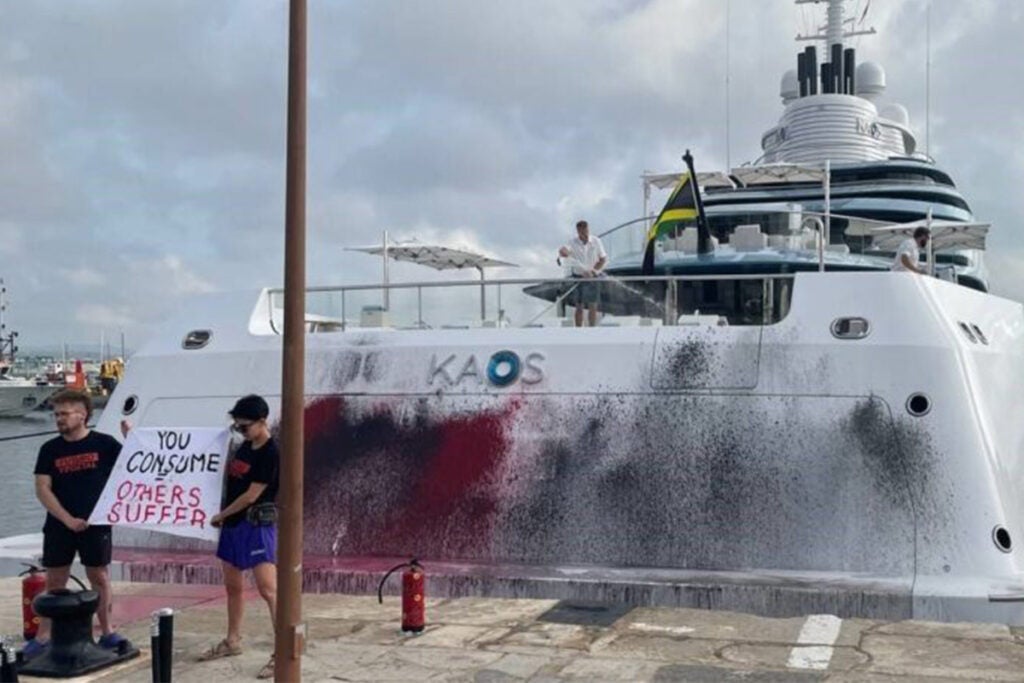
However, there’s no doubt the superyacht industry has come under increased scrutiny in recent years, which has been compounded by the seizure of yachts owned by Russian oligarchs after the invasion of Ukraine. The vessels that are the world’s most expensive consumer items have become symbols not of enviable wealth and success but of extreme income inequality, unsustainable extravagance and even ill-gotten gains.
[See also: Monaco Yacht Show: Meet SP80, the boat set to break the world sailing speed record]
One result was the deployment of the tightest ever security at the Monaco Yacht Show last September, when an unprecedented number of plain-clothes guards mingled among crowds, with a wall of extra security clearance points erected throughout the docks and event halls at Port Hercule.
Two recent paint-bomb attacks on Kaos, the 110-metre, $300 million megayacht of Walmart heiress Nancy Walton Laurie, have left owners and marina managers bracing for further protests, as groups such as Extinction Rebellion and Just Stop Oil argue that the world can no longer indulge billionaires’ toys crammed with helicopters and submarines.
‘I used to dream about superyachts as the epitome of being successful, but now that we are in a genuine climate emergency I can’t see how anyone thinks they are a justifiable use of the world’s limited resources,’ says Laura Baldwin, a former British Olympic sailor who is now an Extinction Rebellion activist. ‘The rich people who own them might be able to afford them but the planet can’t afford them… so yes, you are going to see more and more direct action against superyachts.’
In Monaco’s bars and display rooms during the year’s most prestigious yacht gathering, there was plenty of angry muttering that the criticism was driven by jealousy, ‘communism’ and sensational media coverage. But wiser heads in the industry know the growing demonisation of superyachts is an existential threat that builders, designers and owners cannot ignore.
[See also: What are the trends shaping the private aviation industry?]
Henk de Vries, chief executive of Dutch shipbuilder Feadship, says his firm’s scramble to develop greener vessels is costing a lot of money ‘but we have no choice: we have to do it if we want to secure our future’. He says he has ‘been horrified’ to hear some rival builders set leisurely targets for reducing emissions, warning that ‘we don’t have much time left’.
This sense of danger among the more farsighted players in yachting comes when the industry is cruising nicely by most measures. The void left in shipyard order books by the withdrawal of Russian buyers has been quickly filled by Americans and other wealthy buyers, and the industry’s post-Covid boom has cooled only slightly in a global economy that continues to produce record numbers of people rich enough to own a yacht.
Brokers say there has also been a surge of demand for charters among customers who are not quite up for a price tag of tens or hundreds of millions of dollars and annual running costs of about 10 per cent of a purchase price. Many have realised since Covid that spending perhaps $100,000 renting a yacht is not much more expensive than a family holiday with first-class flights and luxury hotels.
Superyachts: the ultimate ‘stranded asset’?
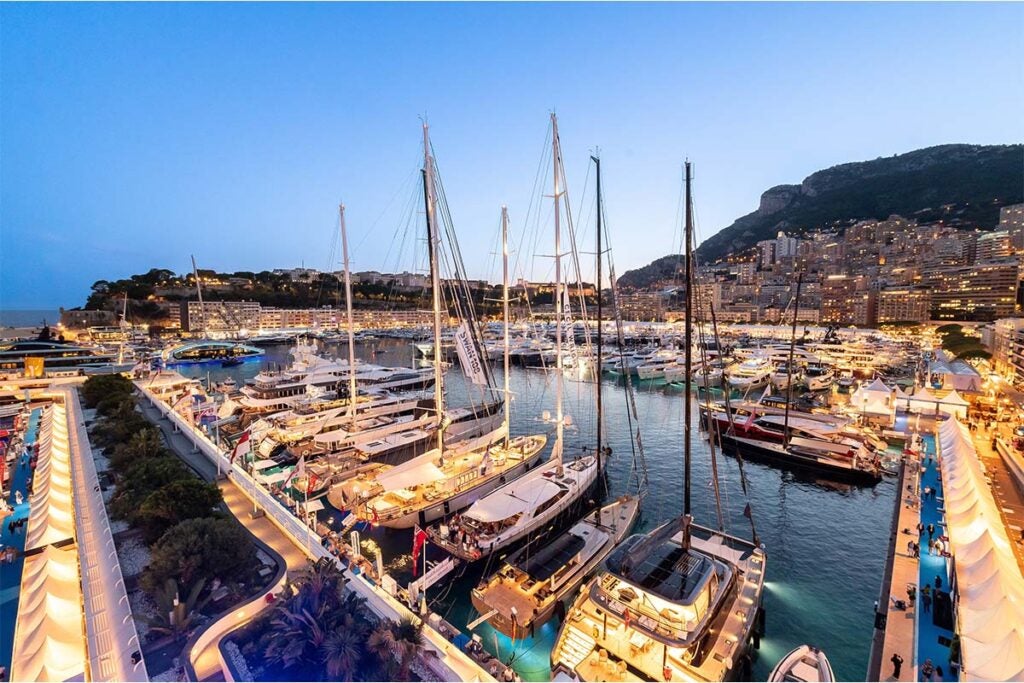
The real threat comes not from paint bombs and attempts to shame yacht users but from the broader public attitudes behind the protests, and the resulting prospect of banks, insurers and regulators imposing new restrictions, not to mention politicians looking for a juicy political target. Norway has already blocked access to its fjords for dirtier yachts, while Sweden is tightening its regulation of shipyards, and many other builders and marinas are located in European countries that are more politically sensitive than ever to climate issues.
Yacht owners have nervously noted the plan by the Dutch state-owned airport operator to ban private jets from Schiphol airport.
Nigel Marrison, a former yacht skipper whose firm Blue ESG has developed operating procedures and analytical tools to help motorised yachts reduce their carbon emissions, says the industry is dragging its heels so badly that without radical change superyachts could become the ultimate ‘stranded asset’: impossible to use, charter or resell.
[See also: The best yacht advisers for high-net-worth individuals]
‘It’s about basic asset risk management,’ he said while standing beside a berth at the Monaco show. ‘We can do nothing and wait for societal pressure to act against us, or we can get ahead of it and take the initiative to try to protect our licence to operate.’
But Jim Evans, founder of upmarket mid-sized brokerage SuperYachtsMonaco, says it is extremely hard for the industry to influence the public narrative ‘when a lot of the criticism is not really about superyachts but about the fact that some people just think billionaires should not exist’.
‘That is a whole different sociopolitical debate and all we can do is stick to reality,’ says Evans. ‘We’re not building secret weapons. We’re not killing anybody and we’re not using slave labour. There are a lot of people very profitably employed by doing this thing. There are people with good conscience who are keen to see some kind of sustainability and clean energy in yachting. That’s not a knee-jerk reaction to people throwing paint on the back of boats; it’s been happening for a number of years. It just takes time to develop the technology.’
There are two fronts to the effort to reduce yacht emissions. The first is to reduce energy consumption, up to 80 per cent of which is used on the ‘hotel load’ or powering things such as air-conditioning rather than actually propelling the vessel. The other challenge is to move away from fossil fuels, perhaps by using biofuels as an interim step and then methanol or hydrogen, while hoping that batteries and fuel cells undergo the massive advances needed to fit them into the confines of a yacht.
Nudging Superyacht owners in the right direction
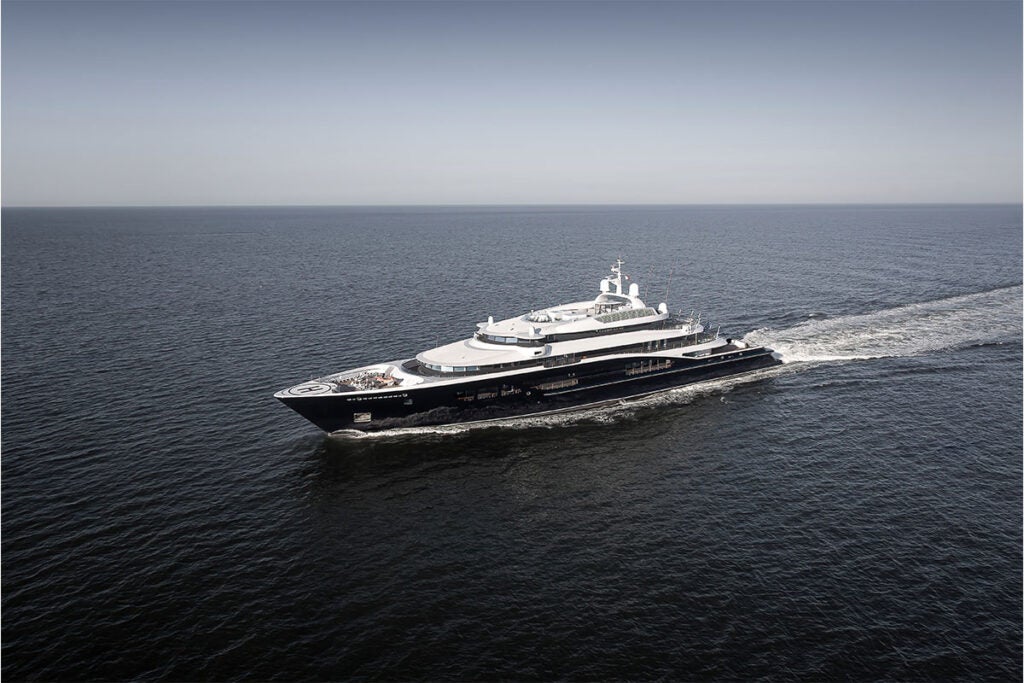
Dickie Bannenberg, a London-based yacht designer who has long been one of the industry’s most noted innovators, has produced a voluntary protocol to help designers steer their clients towards building more environmentally sustainable vessels. Frustrated by the industry’s slow pace of change, Bannenberg did an eight-week course at Cambridge University’s Institute for Sustainable Leadership and then consulted other designers and naval architects, several of whom have endorsed his new protocol.
‘The term “sustainable yachting” is almost an oxymoron, but designers do have influence with owners when we sit down to talk about a new build, so the aim is to at least point them towards some choices that will make a difference,’ he says. ‘It is hard to rein back the extravagance and the ambitions of an owner, but there is some relatively low-hanging fruit, like encouraging them to move away from using endangered materials such as precious teaks, and ending the arms race of installing more and more air-conditioning. Air-con is the single biggest use of energy and you don’t really need to have curtains of chilled air falling on every outdoor table, or massive systems designed for 50-degree temperatures and 100 per cent humidity.’
[See also: Meeting Harry Macklowe: the man who shaped New York]
Painting a hull in dark colours will massively increase the heat it absorbs, as can the modern taste for using huge expanses of glass – both above and below sea level – to make owners feel closer to the ocean. Reducing the amount of absorbed heat cuts the required air-conditioning, in turn allowing smaller and lighter generators and engines. Designs should also allow for future upgrades to accommodate new power systems, says Bannenberg.
‘This is all depressingly low on most clients’ agendas but there are signs of change,’ he says. ‘Some Americans who made their fortunes in tech are more disposed to the green side of things, and they have the money to do it. You are starting to see people who want to show off their commitment to sustainability, which may be conscience-salving mixed in with some awareness of these growing social pressures.’
Robert van Tol, executive director of the Water Revolution Foundation, an industry-funded body promoting greener practices, says the average superyacht spends 90 per cent of its time sitting in a marina or at anchor, and only 0.8 per cent at high speed and 0.1 per cent at maximum speed, yet shipyard contracts usually focus on maximising energy efficiency at those top speeds. It would make much more sense to calibrate engines to function most efficiently at the lower cruising speeds that dominate their real-life use, he believes.
Last September’s Monaco show featured an unprecedented number of displays about sustainable products and practices, but there were plenty of signs that progress is still slow. One of the dozens of beautiful yachts on display was the 97-metre Carinthia VII, which has the décor of a grand hotel and can be chartered for €1.4 million a week (plus fuel, food and a staff tip of at least 10 per cent). Last advertised for sale at €95 million, the 21-year-old yacht has recently been refitted, but a tour suggested that refit was not driven by ‘green’ concerns. The area covered by air-conditioning was expanded and the vessel was painted a darker blue.
Signs of progress?
Jack Hogan, editor of leading analysis house the Superyacht Group, says he has been ‘genuinely heartened’ by the progress shipyards have made over the past two years, as several builders are racing to develop new propulsion systems.
When Massimo Perotti, chief executive of Italian builder Sanlorenzo, returns to Monaco for this year’s show, he plans to bring a 50-metre vessel that will be the world’s first hydrogen-powered superyacht.
[See also: Health-conscious younger travellers to drive rise in demand for wellness retreats]
Some vessels, such as Amazon boss Jeff Bezos’s 127-metre three-masted schooner Koru, are turning the clock back to wind power – but there is a limit to the potential of old-fashioned sailing. Not everyone likes leaning to one side in the narrower hulls of sailing boats, nor relying on the vagaries of the winds when plotting their course. The greatest potential for wind may be the use of hi-tech sails to supplement engines rather than replace them.
Perhaps the biggest challenge, according to Hogan, is that while the wealthy builders of the biggest new vessels might be persuaded to go green, the overwhelming majority of superyachts are smaller vessels that lack the space for the much larger tanks needed for greener fuels. The fact that almost no superyachts are scrapped means those smaller boats will be a long-term problem, and their owners do not usually have deep enough pockets to fund green innovations.
‘This stuff costs serious money,’ says Jim Evans. ‘A shipbuilder offering a new 50-metre yacht might charge, say, €31-32 million for a standard propulsion diesel engine, but if you want a hybrid package that might allow you to keep the hotel power on all night without burning diesel you’re going to add €2-3 million to the cost of your acquisition.’
One important change in the industry’s infrastructure is coming from Saudi Arabia, which is ploughing billions of dollars into building new marinas and resorts in the Red Sea. Those facilities will start to open early this year and could impose competitive pressure on other marinas, as the Saudis say they are investing heavily to ensure their new destinations are greener than their rivals in the Mediterranean and elsewhere.
[See also: The new face of Saudi Arabia]
But even the greenest new facilities are unlikely to impress critics who say the industry simply should not exist. US anthropologist Richard Wilk of Indiana University says superyachts are ‘by far the worst asset to own from an environmental standpoint’ because ordinary people will be more reluctant to make their own climate-related sacrifices if they believe billionaires are getting away with such extravagant consumption.
‘This whole industry is just not the right thing in a time of genuine emergency,’ says Laura Baldwin. ‘We don’t have time for yachts to eventually reduce their emissions. The owners and builder should be devoting all that money and skill they have to finding solutions.’
Defenders of the industry insist that it has huge potential to innovate, perhaps developing products and ideas that could help clean up cargo shipping in the way Formula One racing has spurred progress in the wider auto industry. Jim Evans says a great outcome would be a new green ‘arms race’, with billionaires competing to own not the biggest yacht with the most dazzling selection of onboard submarines and helicopters, but the greenest vessel afloat.
Indeed, Henk de Vries says he has seen early signs of that sort of competition, especially among the children of wealthy yacht owners. Innovations on Feadship’s new 84-metre yacht Obsidian, which has diesel- electric hybrid power and can use biofuel, were pushed by the unnamed owner’s children, and De Vries says he has already used Obsidian’s progress to prod another buyer to make his own yacht greener.
Robert van Tol says the best hope for the industry might be to persuade owners to pursue the idea of responsible or sustainable luxury: ‘Maybe we can market that as the ultimate luxury.’
This feature was first published in Spear’s Magazine Issue 90. Click here to subscribe




